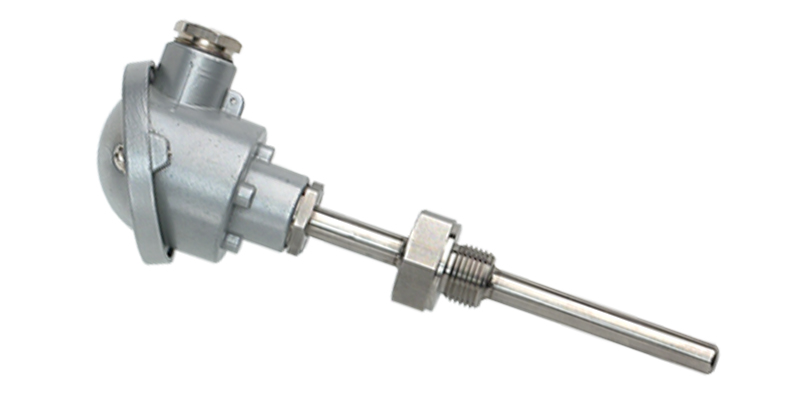
A thermocouple is a temperature sensor that is used to gauge temperatures in manufacturing, machining, and scientific applications, as well as everyday appliances. A thermocouple can be useful to ensure surfaces, like steel or other metals or metal alloys, are appropriately heated for machining, or to gauge when a container or location is too warm and coolants need to be introduced.
A thermocouple function based on differential calculations from a known temperature point called a cold or reference junction, and a probe, connected to the unit to be measured. Lab conditions allow a natural cold junction, but applied thermocouple conditions often necessitate the use of an artificially generated temperature constant. Because voltages generated by connecting dissimilar metals are known and constant, they are used as reference points based on their relation to the measuring junction. When the machine determines this difference, it calculates the temperature and sends the message to the measuring device.
Because different combinations of metals will produce different temperatures, and these different metals have different durability and strength levels, researchers have produced standardized combinations to exploit maximum outcome potential in a standardized set of combinations.
Thermocouple Types and Thermocouple Range
There are four different classifications of thermocouple pairings, most distinguished by a capital letter heading. These are the homebody class, the upper crust class, the rarified class, and the exotic class. The homebody class consists of “standard” or commonly used metals, while the upper crust class represents all platinum combinations. The rarified class consists of refractory metals and the exotic class is much more specific in nature, usually special combinations of rare metals used for specified applications.
| Thermocouple Type | Composition | Thermocouple Temperature Range |
| B | Platinum 30% Rhodium (+) | 2500-3100 degrees F |
| Platinum 6% Rhodium (-) | 1370-1700 degrees C | |
| C | W5Re Tungsten 5% Rhenium (+) | 3000-4200 degrees F |
| W26Re Tungsten 26% Rhenium (-) | 1650-2315 degrees C | |
| E | Chromel (+) | 200-1650 degrees F |
| Constantan (-) | 95-900 degrees C | |
| J | Iron (+) | 200-1400 degrees F |
| Constantan (-) | 95-760 degrees C | |
| K | Chromel (+) | 200-2300 degrees F |
| Alumel (-) | 95-1260 degrees C | |
| M | Nickel (+) | 32-2250 degrees F |
| Nickel (-) | 0-1287 degrees C | |
| N | Nicrosil (+) | 1200-2300 degrees F |
| Nisil (-) | 650 -1260 degrees C | |
| R | Platinum 13% Rhodium (+) | 1600-2640 degrees F |
| Platinum (-) | 870-1450 degrees C | |
| S | Platinum 10% Rhodium (+) | 1800-2640 degrees F |
| Platinum (-) | 980-1450 degrees C | |
| T | Copper (+) | negative 330-660 degrees F |
| Constantan (-) | negative 200-350 degrees C |
Rarefied and exotic thermocouples do not have special alpha codes assigned to them, because they are much less frequently used. Some of these combinations have standard temperature ranges listed in technical literature, however.
In addition to the numbering system, thermocouples are also generally color coded. The color coding’s are different from country to country, so it is best to look up the different color coding based on the country from which the material is sourced.
Types of Thermocouples and Their Applications
Some thermocouple applications include measuring steel during machining. B, K, R, and S type thermocouples are most suited to this job because of their high temperature ranges. This helps the manufacture know when the molten material is melted to a sufficient temperature. Heating appliances also perform well with thermocouples. Gas-fed appliances can get too hot if they are pumped to saturation, which can create dangerous situations where gas is under pressure and high temperatures are present. Thermocouples can read temperatures and activate gas shut off devices when situations get volatile.












